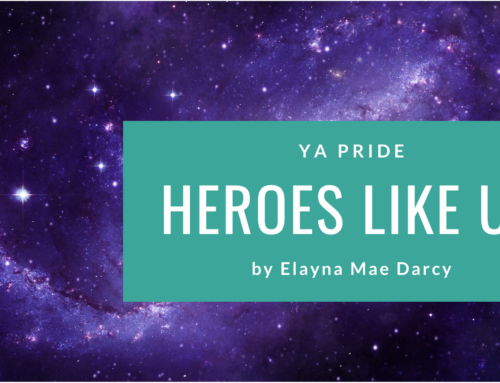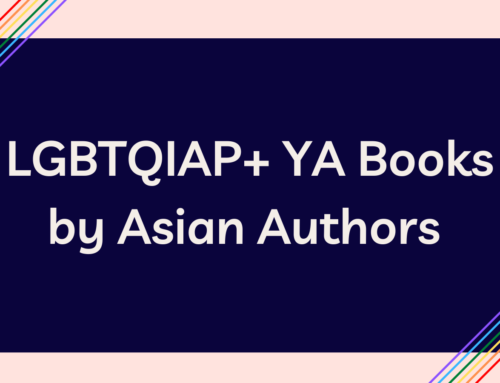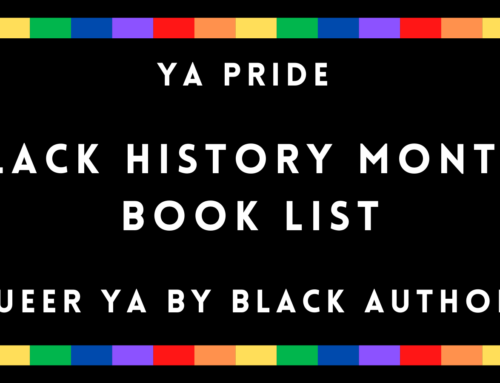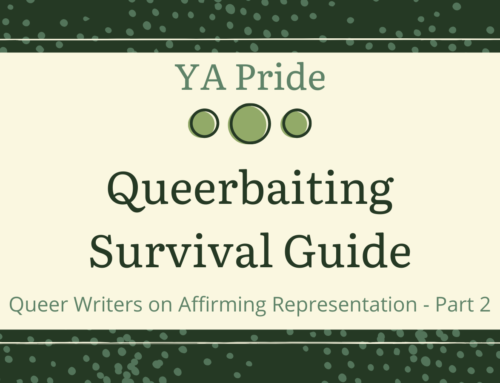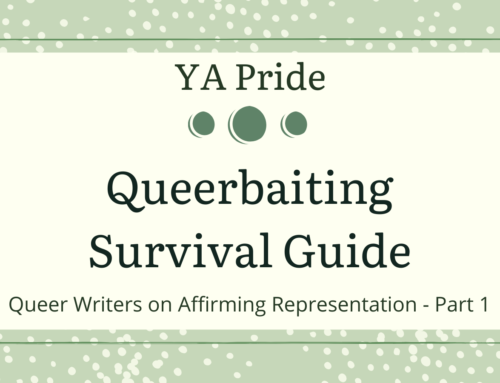by Nita Tyndall
I was twelve the first time I realized I was queer. Back then, I identified as bisexual. Although I didn’t think I was a lesbian (even though I’d never felt attracted to boys), I wanted to keep my options open. And when I was twelve, those were the only two words I knew—lesbian and bisexual, though neither of them felt right. Gay didn’t, either, because I’d always associated that word with gay men, and I wasn’t one of those. So from twelve to thirteen, I was bisexual.
When I was in high school and started really being interested in and attracted to girls, I went with lesbian. It was the only word I knew, and by then I knew I didn’t like boys at all. But it still didn’t feel quite comfortable, like an itchy sweater that’s a size too small, but you wear it because it’s the only thing that’ll keep you warm.
And at the time, I thought, maybe I was a lesbian. I’d tried to get my hands on the few YA books I knew of with lesbian protagonists, because whenever I had a problem I needed to solve, I turned to a book. Books never failed me, they offered insight and the hope that everything would turn out right in three hundred pages or so. The lesbians in those books seemed as confused as I did, but more often than not they knew what their label was, what their identity was, and even if they had angst about coming out, everything turned out all right. But the way they felt about girls and the way I felt about girls seemed similar in theory, though not quite as much as I wanted.
Later on in high school, though, I joined Tumblr. And through Tumblr, I not only became more of a feminist, but I learned that there were more identities than gay or bisexual or lesbian, identities like trans or genderqueer or asexual.
Asexual. Huh.
I went to AVEN and read about asexuality, and a small spark went off in my brain, a spark that had slightly started in middle school when I identified as bisexual, when I realized I could be attracted to girls at all. The spark grew into a flame when I read more definitions and found the word demisexual:
Someone who can only experience sexual attraction after an emotional bond has been formed. This bond does not have to be romantic in nature.
Oh! That’s me.
I wanted to burst into tears because at last, here was a word that fit, here was a label that felt right, that encompassed what I felt. No longer did the sweater feel itchy or too small, no longer did I cringe when I identified what I was, because here was a word that could encompass all of my complicated feelings towards girls, here was a label I could cling to.
Because as pervasive as the idea is that labels are for soup cans, not people, there’s something so relieving in finding a word that wholly encompasses, or at least starts to encompass, the experiences you’ve been having. Finding the right label or word for your sexuality can be validating—at last, here is a word to sum up and explain what I’ve been feeling, a word that fits!
And I wonder how much less time I would’ve spent wondering where I fit if I’d read a book with a character who identified as asexual or demisexual, how much less stress it would’ve caused if I could have seen that honestly and accurately reflected in the media I consumed, not as a punchline or stereotype. How much better, easier it would have been to have a character to point to who identified like me, to say, if this person identifies this way, why can’t I? To have that character whose problems are resolved in three hundred pages, who finds love and fights dragons and goes on adventures, and who also is genderqueer or panromantic or, yes, asexual.
I think it would have helped a lot. At the very least, it would have helped me feel less alone.
Nowadays, I identify as queer, because I like the ambiguity of it and because homoromantic demisexual is too long to fit in a Twitter bio. I like queer because of the possibility it can encompass, the ease of saying it. But I am still demisexual, and that label, the knowledge of that word, carries a lot more hope and acceptance in it than I ever thought to find. I know some people may not need labels and some people may choose not to use them, and that’s absolutely fine, but you cannot underestimate the importance, the relief of finding the right one.
Someday, I hope there are more books with demisexual characters, or asexual characters, characters who struggle with finding the right label, because right now there’s a teen out there who has no clue what they identify as, a teen who won’t know what they are until they read a book and something clicks and that tiny spark goes off in their brain and they’re able to say—
Oh! That’s me.
For more information on asexuality, please visit http://www.asexuality.org/home/?q=general.html#def
Nita is a tiny Southern queer YA writer with deep love of sweet tea and very strong opinions about the best kind of barbecue (hint: it’s vinegar-based). She’s currently in college obtaining an English degree and is a contributor for TheGayYA. You can find her on tumblr at nitatyndall where she writes about YA and queer things and reblogs pictures of elephants, or on Twitter at @NitaTyndall. She is represented by Emily S. Keyes of Fuse Literary.
